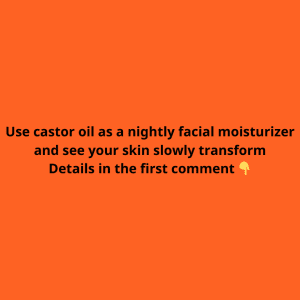Facial fillers have long been a go-to solution for those looking to enhance their features without surgery. Whether it’s plumping lips, smoothing wrinkles, or contouring the face, hyaluronic acid fillers like Juvéderm and Restylane have become staples in the world of cosmetic procedures. But what happens when you’ve been getting filler for years and then decide to stop? It’s a question many are asking as more individuals opt to dissolve their fillers or move away from injectables altogether.
What Are Hyaluronic Acid Fillers?

Before diving into what happens when you stop using fillers, it’s essential to understand what they are and how they work. Hyaluronic acid (HA) fillers are injectable gels used to enhance facial features by adding volume. HA is a sugar-based substance naturally found in the body that helps retain moisture, keeping skin plump and hydrated.
These fillers are popular for their ability to contour, smooth, and rejuvenate the face with little to no downtime. However, the effects are temporary, lasting anywhere from six months to two years, depending on the product and where it’s injected.
Why People Are Quitting Fillers
Despite their popularity, an increasing number of people are choosing to reverse or stop using fillers altogether. One major reason is what experts refer to as “filler fatigue.” This phenomenon occurs when people have been using fillers for an extended period and find themselves unhappy with the results.
According to Dr. Lara Devgan, a board-certified plastic surgeon in New York, overuse of fillers can lead to facial distortion, resulting in an unnatural or “overfilled” appearance. This can happen when too much filler is injected over time, causing an inflated, often puffy look. Celebrities like Courteney Cox and Amy Schumer have openly discussed their regrets about overfilling their faces and have turned to a process called hyaluronidase to dissolve the excess filler.
Filler Fatigue: The Dangers of Overfilling
Filler fatigue isn’t just about aesthetics. When too much filler is used, it can distort not only the appearance of the face but also its function. Muscles and tissues can become stretched and overextended, leading to an unnatural look. Dr. Mitesh Kapadia, an oculoplastic surgeon, describes this as an “epidemic” in the world of cosmetic procedures. Many patients seek to reverse the damage caused by excessive filler use through the injection of hyaluronidase, a synthetic enzyme that breaks down hyaluronic acid.
When fillers are overdone, they can migrate from their original injection sites, leading to lumps or uneven areas. In some cases, individuals may experience swelling or the sensation that their face just “feels strange.” This can prompt them to quit fillers entirely, either by dissolving the remaining product or simply waiting for it to naturally break down.
The Psychological Impact of Fillers
It’s not just about the physical side effects—many people experience a psychological shift after years of using fillers. The constant upkeep, the need for regular touch-ups, and the fear of looking “off” can become overwhelming. Dr. Jonathan Cabin, a board-certified facial plastic surgeon, explains that some patients simply grow tired of the process and the pressure to maintain a specific look.
In many cases, patients start with subtle enhancements but, over time, find themselves adding more and more filler. The end result can be a face that no longer feels natural, leading to dissatisfaction. This growing discomfort with fillers can push people to reconsider whether they want to continue using them or opt for more permanent solutions like surgery.
What Happens When You Stop Using Fillers?

So, what actually happens when you stop using fillers after years of routine injections? The outcome depends largely on how much filler you’ve been getting and how frequently.
For those who’ve had small amounts of filler injected over time, the effects of stopping are minimal. The filler gradually dissolves, and the face returns to its natural state without much issue. However, individuals who’ve undergone more aggressive treatments—getting several syringes of filler at each appointment—may face a longer and more complicated process.
One of the concerns many have is whether their skin will look worse after quitting fillers. While some worry about sagging or wrinkles appearing more pronounced, this is not always the case. According to dermatologists, fillers do not typically cause long-term damage to the skin. However, if too much filler was used, the tissues may have been stretched, and it can take time for the skin to adjust back to its original state.
In some cases, patients might notice a temporary loss of volume, but this is usually just the effect of the filler dissolving and is not indicative of permanent changes to the skin.
The Rise of Filler Reversals
As the demand for fillers has grown, so too has the desire for filler reversals. According to recent reports, aesthetic providers are seeing a significant increase in the number of patients seeking to dissolve their fillers. The American Society for Aesthetic Plastic Surgery reported a 57% rise in filler reversals in 2021 compared to the previous year.
Many individuals who choose to reverse their fillers are driven by a sense of dissatisfaction with their appearance or complications arising from overfilling. Others simply want to move away from the maintenance that fillers require and return to a more natural look.
A New Approach to Beauty

The trend of dissolving fillers reflects a broader shift in how people approach cosmetic enhancements. While fillers are still popular, more individuals are opting for moderation or seeking alternatives like surgery for a more lasting result.
Additionally, many are becoming more discerning about their use of injectables, choosing providers who prioritize subtle, natural results over dramatic transformations. There’s also a growing awareness of the importance of maintaining overall skin health through sun protection, hydration, and non-invasive treatments.
Conclusion
Stopping fillers after years of use can be a liberating experience for many. Whether it’s because of filler fatigue, overfilling, or a desire for a more natural appearance, people are increasingly opting to move away from injectables. The good news is that, in most cases, the face can return to its natural state with minimal long-term effects. However, it’s important to remember that moderation is key. If you’re considering fillers or deciding to stop, always consult with a qualified professional to ensure the best possible outcome.


